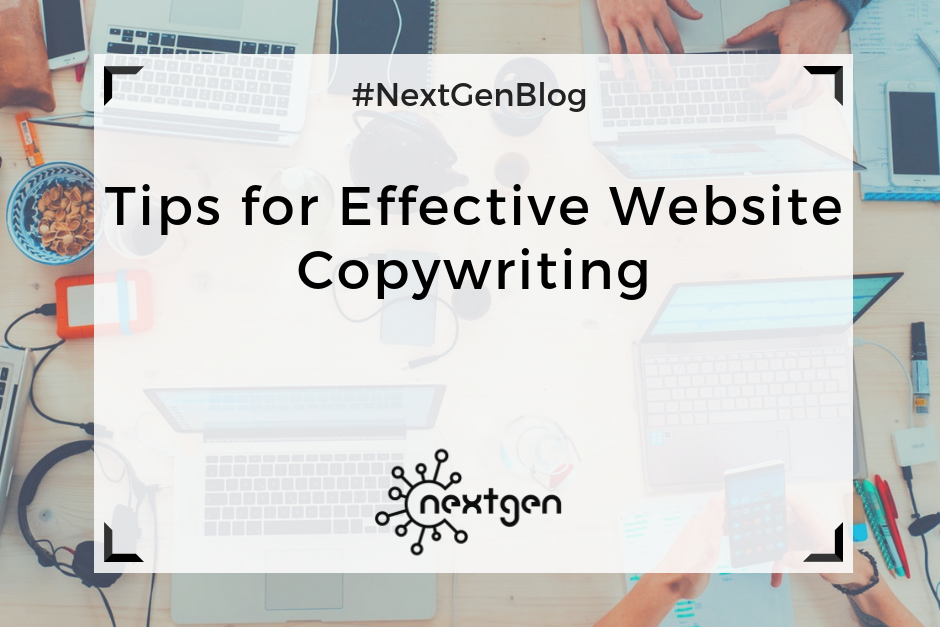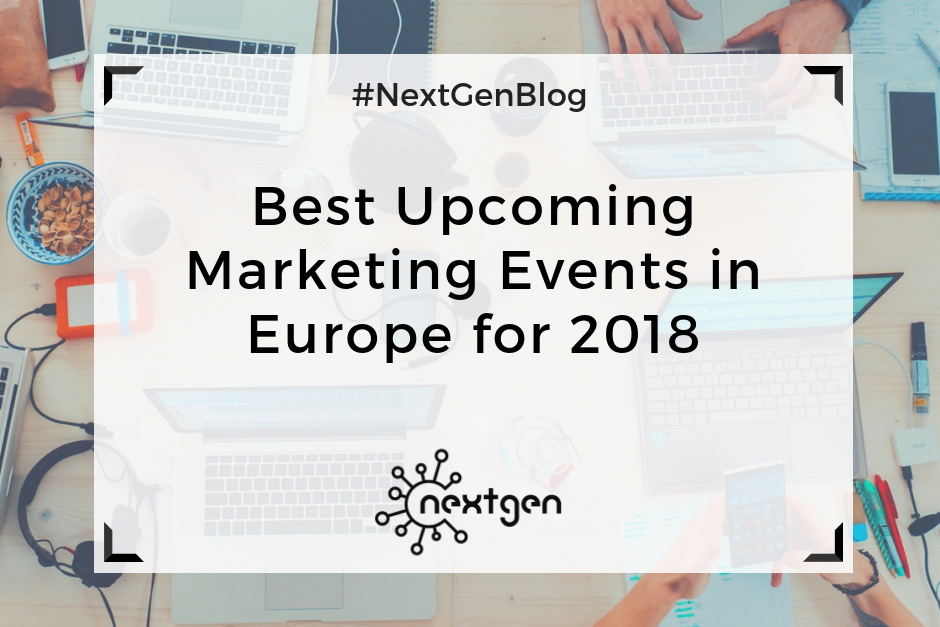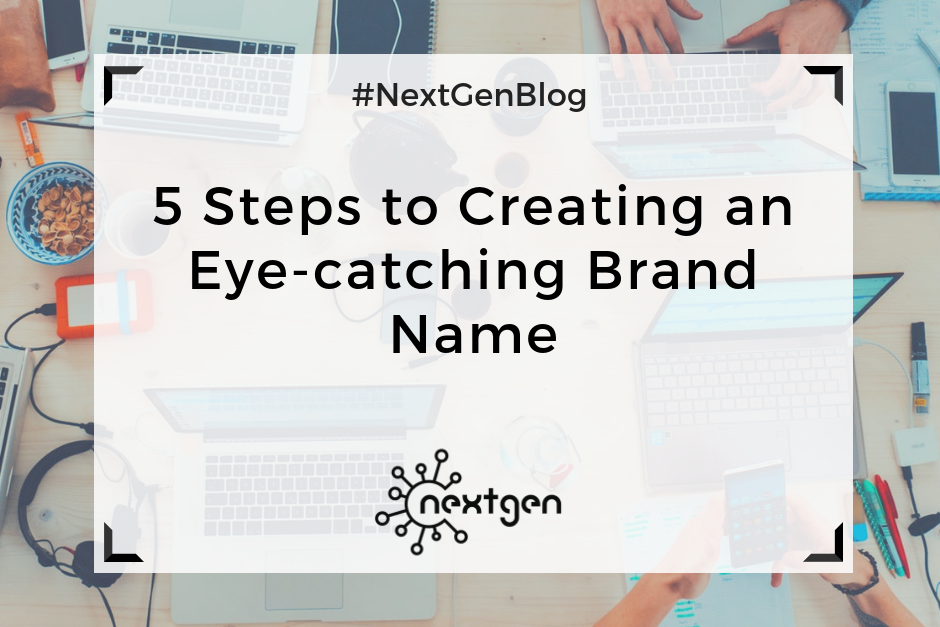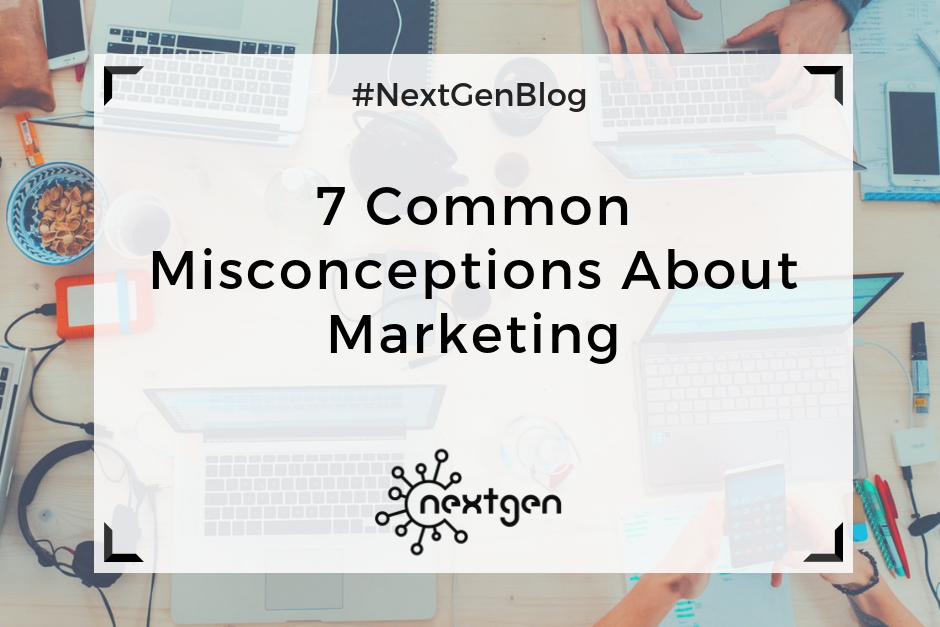
by Sofi | Sep 28, 2018 | Other
Everyone has told you that great content is key for your brand’s online success. So you regularly post great content on all of your social media, your website, your blog, etc…now what? Having online content is not enough to build your brand; you also want to attract the attention of your audience in a way that generates click-throughs. Here are five tips on how to get more clicks on your content.
#1 Create Catchy Headlines
Whenever you are creating a headline, you want to make sure that it does two things: grabs attention and peaks interest to find out more. There’s an overwhelming amount of content online, so your headline has to first make someone scrolling stop in their tracks. Then, it has to make them want to follow through by clicking on the content. One good method of achieving this is to leverage the “curiosity gap.” Headlines that use the “curiosity gap” are specific enough to intrigue the reader but not so specific that they satisfy the reader’s curiosity.
#2 Promise Value
Have you ever seen something online and questioned why it mattered? Your audience is more likely to click on content when they know exactly what value the piece is offering them. Many advertising copywriters suggest using the phrase “how to” in your content to provide a specific direction and what to expect. Your content should speak for itself as to why your audience should pay attention. It should be simple and straightforward so there is less thinking involved and more clicking!
#3 Clearly Address Your Audience
Part of creating great content in the first place is having a clearly defined audience. Do not be afraid to directly shout them out to direct them to your content. This lets the reader know that this material is right for them, and they should continue paying attention. You can grab attention by stating who the content is for or asking the reader if they fit a certain profile, such as “Beginner’s Guide For Small Business Startups” or “Are You an Independent Writer Seeking Work?”
#4 Include Visuals
No matter what device or platform your audience is using, images and videos attract more attention than plain text. Social media posts should always include visuals whenever possible to draw attention and stand out amongst a flood of other posts. Blog posts can use visuals to help the reader immediately understand what they are about to read and engage them to continue. Websites should use visuals, whether images or graphics, to direct the viewer as to what actions they should take. Visuals provide cues for your audience that help generate clicks.
#5 Place Links at Beginning of Posts
Social media is a great place to promote links and generate click-through traffic to websites and blogs. Generally, more people click on links provided in social media posts that are placed a quarter way in from the start. Although placing links at the very end can be more convenient, it is proven that the positioning does not lead to as many interactions.
These five tips on how to get more clicks on your content can make your posts more valuable for your business. Always keep in mind who your audience is and what action you want them to take.

by Sofi | Sep 21, 2018 | Other
Writing good copy for your website is very important if you want to keep visitors interested in your business and products. The advertising pioneer Shirely Polykoff once said, “Copy is a direct conversation with the consumer.” So, it’s up to you to make the conversation enjoyable for your consumers.
If you want to start writing great web copy, try the following tips:
#1 Write clear and comprehensive content
First and foremost, the content you write on your website needs to be clear, to the point, and easy to understand. Also, you need to make sure you don’t have any grammar or punctuation mistakes. If your visitors don’t get what you’re saying, they will lose interest and leave your website.
#2 Be concise
When writing copy, try to use short words, short sentences, and short paragraphs because most people have short attention spans and avoid content that is too long to read. Make your content short and simple yet memorable.
#3 Make your content skimmable
To make your content skimmable, use informative headings, create numbered lists, bold important words and phrases, adjust font sizes, and use enough white space between paragraphs.
#4 Use active voice sentences
You should tend to use active voice sentences to provide a better experience for your readers. Active voice sentences are usually shorter, clearer, and more direct as opposed to passive voice sentences.
#5 Be positive
Positive words have a huge impact on people’s emotions, and they are more likely to remember them. This is why you should include as much positive language in your web copy as possible. There are times when negative language is appropriate as well, but you should be very careful of when and how you use it.
#6 Avoid using jargon
If you want your website to look professional you should avoid using jargon. If you use jargon, you risk getting misunderstood and some visitors might not take your website seriously. Instead of using jargon, stick to words that target your audience.
#7 Use storytelling
Build relationships with your customers and keep their attention by telling a good story. Honest and compelling storytelling will get your customers more interested in your business and products, and it will make you seem more credible and authentic in their eyes.
#8 Include visuals
To improve your audience experience on your website, enrich your content with different types of visuals whenever appropriate. You can include photos, videos, infographics, or any type of visual that will make your content more appealing and/or informative.
#9 Create CTAs
Having great web content is not enough if you want to convert your visitors into leads and customers. Encourage your visitors to take action on your website and move them down the sales funnel by creating a powerful call-to-action. Depending on your specific goals, you can create CTAs such as: Subscribe Now, Sing Up for Free, Download Brochure, etc.
#10 Include relevant sources
Back up your claims with relevant sources. For example, you can use statistics, articles, case studies, and other relevant sources to prove the information you share on your website is true.
#11 Proofread and edit
However confident you are that your web content is great, there is always a possibility that you made some mistakes. Therefore, always proofread your content to make sure everything is correct, and if necessary make some edits as well.

by Sofi | Aug 24, 2018 | Other
Every year multiple marketing events take place in different cities around the world in various forms: conferences, summits, workshops and classes, seminars, trade shows and expos, etc. People gather together at these events for the purpose of networking, learning about new products and technologies, searching for new business opportunities, discussing important marketing topics and trends, and more.
Here is a list of the best upcoming marketing events for 2018:
#1 DigiMarCon (Digital Marketing Conference)
Date and location: 5-6 September – London, UK
Starting price: £497
Website: https://digimarconeurope.com/
DigiMarCon is one of the most important marketing conferences in Europe. Attending this conference will provide you the opportunity to learn about digital marketing from many marketing experts, as well as the opportunity to network with other marketers and business professionals. Some of this year’s conference topics include: Digital Strategy, Web Experience Management, Mobile Marketing & Retargeting, Social Media Marketing, Video Marketing, Email Marketing, Data Science & Big Data, Growth Hacking, Programmatic Advertising, and other relevant digital marketing topics.
#2 Web Summit
Date and location: 5-8 November – Lisbon, Portugal
Starting price: €495
Website: https://websummit.com/
The Web Summit is considered the largest technology conference in the world and is held annually since 2009. Last year, the conference had 60,000 attendees, which ranged from 500 Fortune companies to small companies within the technology industry. As of 2016, Web Summit is a host to various independent conferences; this year there will be 25 conferences, some of which include: AutoTech, ContentMaker, Corporate Innovation Summit, DeepTech, Growth Summit, Startup University, etc. The Web Summit is an event focused on internet technology, so digital marketers can greatly benefit from attending it.
#3 #DMWF Conference & Expo
Date and location: 19-20 September – Amsterdam, Netherlands
Price: €399 for one day, €699 for two days
Website: https://digitalmarketing-conference.com/europe/
The #DMWF Conference & Expo takes place in Amsterdam next month, and it is an event focused on digital marketing and social media. If you want to learn from some of the most disruptive thought-leaders in the industry–then this is the right event for you. Some of the session topics that are going to be covered this year are: successfully forming an interactive digital content marketing strategy to increase engagement, exploring the value of your website analytics, the value of diversity in marketing, understand how VR and 360 are transforming the marketing and communication industries, understanding the way AI is going to revolutionize and impact on the way brands interact with customers, and other important topics.
#4 NEXT Conference
Date and location: 20-21 September – Hamburg, Germany
Price: N/A
Website: https://nextconf.eu/
NEXT conference is a two-day event where you can learn about important digital trends and how they transform the marketing industry. The main topic for the conference this year is “Digital Fix – Fix Digital,” which is exploring the ways in which the digital world can be transformed. Attendees of this event will have great networking opportunities, as well as an opportunity to enjoy good music at the Reeperbahn Festival. You can get a ticket to attend the conference by applying for one of the four attendee groups: Regular Attendee, Startup Attendee, Student Attendee, or Press.
#5 Social Media Week London
Date and location: 14-16 November – London, UK
Price: £519 (Standard pass), £795 (Premium pass)
Website: https://socialmediaweek.org/london/
The SMW London is a leading three-day conference for marketers that explores how social media and technology influence business, society, and culture. This year the conference’s main theme is “Closer” which will explore the conflict between community and individualism. Three important sub-themes will also be discussed: The You Universe, The Social Divide, and AI vs. Humanity. If you’d like to learn about the newest trends and best practices in social media from leading business and marketing experts, then don’t miss the opportunity to attend SMW London this November.
***
Attending these types of events can be very beneficial for your business because it’s a great way to meet relevant people from the marketing industry and learn valuable information that you can later use to improve your marketing efforts.

by Sofi | Jul 20, 2018 | Other
Do not underestimate the process of creating a unique brand name as there are over 24 million businesses in the US alone making it difficult to come up with an intriguing one. The steps below will guide you on choosing a brand name that will attract and appeal to your customers to make sure you are ahead of the competition.
#1 Knowing what constitutes a good brand name
Before you start brainstorming brand name ideas for your business, it is important to understand the qualities of typically successful brand names including:
– Suggestive: When consumers hear your brand-name, it should instantly evoke positive connotations and imagery. This is especially important for companies expanding into international markets as the selection of words in their brand names should not express negative meaning in other languages.
– Simple and Short: A brand name consisting of a single word can be memorable and impactful, whereas multiple words can confuse the consumer and be more difficult to pronounce.
– Unique and Memorable: Hearing your brand name for the first time should intrigue consumers and stick in their minds. However, it should also be distinctive enough so that a consumer’s attention is drawn to it when looking at other firms within the same industry.
#2 Researching the Market, Competitors and Consumers
This gives you time to fully understand the market and learn the brand names that competitors are using and identify their weaknesses to create a unique name which fills those gaps.
#3 Think about what your name represents
This is the most significant part of the process as your brand name should ideally provide some insight into the function of your brand and its goals. Since your brand name is an extension of your brand strategy, it is worth going over it. Brainstorming with some key words that you want associated with your brand may also be useful.
#4 The type of name that will be the best fit for your business
Understanding the different categories of brand names and their drawbacks may help you narrow down your list of names and identify which kind is best for your business. Some categories of brand names are:
– Descriptive: (Toys-R-Us, General Motors) These brand names are functional as they instantly convey the brand’s story; however, they are unremarkable and leave little room for interpretation from customers. Thus, they may not be the best option for start-up businesses trying to establish themselves..
– Evocative: (Nike, Amazon) These are compelling differentiators from other brands as they evoke a vivid image and employ suggestion to customers however, companies with these names find it challenging to achieve external alignment with customers.
-Founder: (Ralph Lauren, Ben and Jerrys) These names are easy to trademark, but businesses must be ready to employ more money into marketing efforts to make them stand out. Thus, if your business has a small marketing budget, a founder brand name is not recommended.
#5 Trademark and Domain name availability search
Conducting this search is necessary as it ensures that you find available domain names and pick a name that no one else already owns. Once you have chosen your brand name do not forget to protect it by trademarking it. This makes sure that future competitors cannot use it.
Although having a great brand name can draw customers to your business, do not get too caught up in it because at the end of the day your product is what will make them stay.

by Sofi | Jul 13, 2018 | Other
A lot of businesses struggle with marketing, which is often due to the fact that they don’t correctly understand how marketing works. Maybe your business is not an exception. But having a wrong approach to marketing might cost you a lot: it might lead to customer loss, decreased sales, financial loss, etc.
To help you avoid all that, here’s a list of 7 common misconceptions about marketing you should be aware of:
#1 Marketing is just advertising
This is one of the most common beliefs people have about marketing, and it’s completely wrong. Although advertising is a significant part of marketing, they are not the same thing. Advertising is a form of marketing communication, while marketing is a concept covering a wide range of activities. Market research, product development, pricing, distribution, coming up with marketing strategies, creating marketing plans, and other similar activities are all part of marketing.
#2 Small businesses don’t need marketing
People who own small businesses often consider marketing irrelevant for their success. This is the wrong mindset because marketing is essential for the success of any type of business. If, for example, you’re a small business owner who needs to increase brand awareness and customer base–you can’t do it without marketing. Additionally, marketing your products and services will help you increase sales, which will lead to increase in your profits as well.
#3 You can’t invest in marketing if your business is on a tight budget
Although having a small budget will limit how much you can invest in marketing activities, this doesn’t mean you shouldn’t invest at all. Furthermore, not all types of marketing require financial investment. You can always take advantage of free and low-cost marketing options such as social media, email marketing, or telemarketing. At the end of the day, your budget should never stop you from marketing your business.
#4 If you need to make budget-cuts, cut the marketing budget first
When business owners make budget cuts, they first think of the marketing sector because they consider it least important. This is not a clever strategy since good marketing can only increase your earnings and therefore your budget, while total absence of marketing might lead to an even bigger budget loss.
#5 Social media is not a relevant marketing tool
On the contrary, social media has become one of the most important modern marketing tools, and social media marketing is on the rise. Nowadays everybody is on social media, from youngsters to elders. And any successful, famous brand and business owns a social media page. This is because social media is inexpensive, easy to use, great for building brand awareness and engaging with your customers.
#6 You only need to market to new customers
Once you’ve acquired some customers, don’t make the mistake of thinking they’re bound to stay forever. If you never market to your current customers, they might lose interest in your products and services and find whatever they need elsewhere. Obviously, it’s very important to market your business to new people and continuously increase your customer base as well–but don’t direct all your marketing efforts towards that goal.
#7 Traditional marketing is dead
Many modern marketers and business owners now think that traditional marketing is obsolete, and digital marketing is the only type of marketing that gives positive results. Although it’s true that digital marketing works great, that doesn’t mean you should completely erase traditional marketing from the picture. Depending on your goal and budget, traditional marketing can often be the best option for your business. Word of mouth marketing, TV, and radio, for example, are still one of the most effective forms of marketing available, and they’re not going away soon.

by Sofi | Jun 22, 2018 | Other
If you’re a blogger, then you know it’s not easy to continuously come up with new writing ideas and create high-quality content. Besides that, you should make sure your content is well-written and easy to understand, or people won’t read it.
Although writing a blog can seem pretty scary sometimes–don’t worry–there are certain things you can do to improve your skills and make blogging a less challenging task.
#1 Master the basic principles of writing
First things first. Before you start writing anything, you should understand the basic principles of writing. Make sure the content you write is concise, clear, grammatically correct, and it communicates the right message to your audience. It’s not just about what you write but how you write it as well!
#2 Read a lot
Writing and reading are two sides of the same coin, and each supports the other. If you want to be a good writer, you need to do a lot of reading. Reading books enriches your vocabulary and helps you express yourself easily. You can also read books specifically about writing, which can help you learn about the subject more thoroughly.
#3 Don’t plagiarize
Although it’s okay to imitate the writers you admire, you should never plagiarize. It’s not polite to steal someone else’s work, and sooner or later people may notice–which will be disastrous for your blogging career. However, you can always include citations and statistics in your content as long as you give credit to the original authors and provide references for your sources.
#4 Be original and develop your own writing style
Get inspired by your favorite authors, but always create original content and develop your own writing style. Your writing style is what makes you unique, determines the type of audience that reads your blog, and sets you apart from your competitors.
#5 Create a writing habit
In order to be able to continuously improve your blog-writing skills, it’s essential that you create a writing habit. This means you need to immerse yourself in writing on a regular basis. You can do it every day, every week, every two weeks, etc. The more often you do it–the better the results you’ll get!
#6 Do research
If you’re not familiar enough with a certain topic, it’s better to do some research than risk writing down incorrect or irrelevant information. If you write misguiding blog posts, you’ll lose your credibility and your audience will stop reading your blog.
#7 Enrich your content with visuals
You can enhance the reading experience of your audience by adding different types of visuals to your blog posts. Photos, videos, infographs and other types of visuals will make your content more interesting for your readers and more likely to be shared. Just make sure you always use relevant and good quality visuals.
#8 Proof-read your content
Always proof-read your content! Read it over and over again until you think it is well-structured and there are no grammar, spelling, or punctuation mistakes. You may have a great story to tell, but if your content is hard to read and understand–it won’t make a good impression on your readers.
***
Writing a great blog shouldn’t be too hard if you regularly work on improving your skills. So, follow the above tips and start writing fabulous content!







